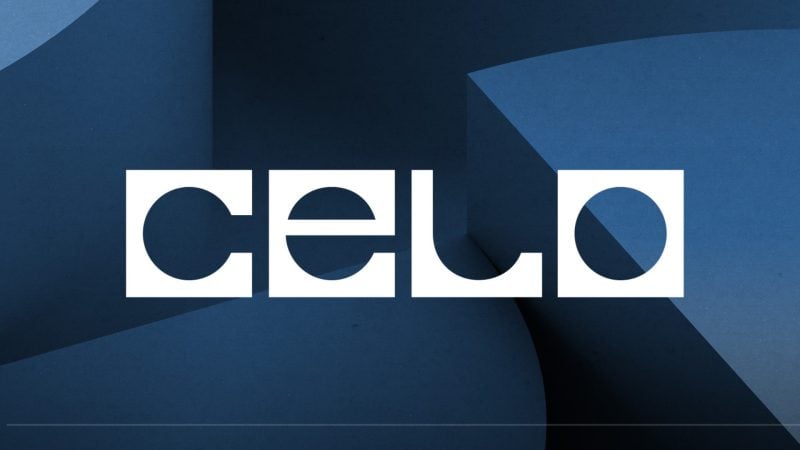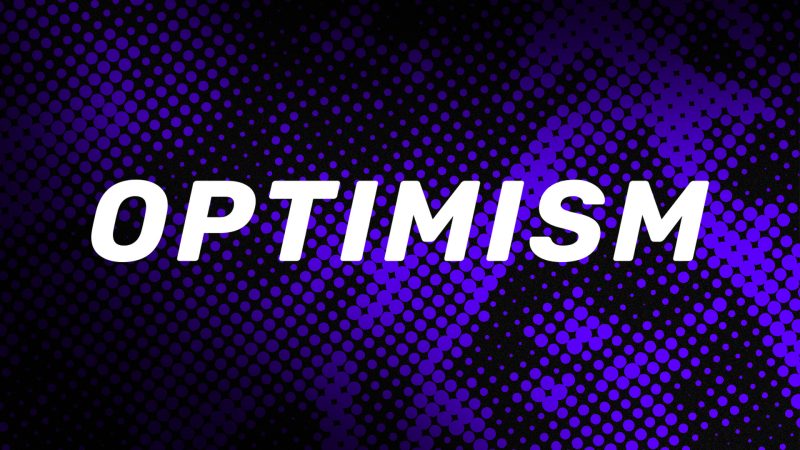The Block • Apr 22, 24
Celo developer cLabs proposes using OP Stack to launch Ethereum Layer 2 chain
After evaluating various scaling technologies over an eight-month period, cLabs chose OP Stack for development.
Read more



Create a Coinbase account to buy and sell Optimism on the most secure crypto exchange.
Optimism is a layer two protocol and smart contract platform that aims to enable low-cost and near-instantaneous Ethereum transactions. The OP cryptocurrency powers the Token House, which will be a division of the Optimism Collective alongside the Citizens' House. The Collective governs network parameters, treasury disbursements, and protocol upgrades.
Optimism (OP) is a layer-two blockchain that operates on top of Ethereum, aiming to scale the Ethereum ecosystem by using optimistic rollups. This means transactions are recorded on Optimism but ultimately secured on Ethereum, benefiting from Ethereum's security. Optimism is home to numerous protocols and has a total value locked (TVL), making it a notable scaling solution for Ethereum. The Optimism Foundation, a nonprofit organization, leads Optimism with the goal of growing the Optimism ecosystem. The foundation is funded by donations and grants and strives to produce infrastructure that promotes the growth and sustainability of public goods.
Optimism operates with a focus on simplicity, pragmatism, and sustainability. It aims to keep its code as simple as possible, using proven Ethereum code and infrastructure when possible. The ecosystem is driven by the real-world needs and constraints of its team and users, aiming to build iteratively and implement features gradually. Optimism uses optimistic rollups and leverages the consensus mechanism of Ethereum to scale the network. Blocks are constructed and executed on Optimism (L2), while user transactions are batched up and submitted to Ethereum (L1). Transactions are submitted to Ethereum without direct proof of validity and can be challenged for a certain period of time. After this period, a transaction is considered final.
Optimism aims to create an ecosystem where value is generated for its three constituencies: token holders, contributors and builders, and users and community members. Token holders are compensated through the productive re-deployment of sequencer revenue. Contributors and builders receive value from retroactive public goods funding. Users and community members receive value from ongoing airdrops and project incentives. The demand for OP block space generates revenue, which is distributed to public goods, driving more demand for block space. This makes Optimism a potential platform for various decentralized applications and protocols.
Optimism is led by the Optimism Foundation, which is dedicated to growing the Optimism ecosystem. The foundation is completely funded by donations and grants and pledges to produce infrastructure that promotes the growth and sustainability of public goods. The foundation has set several milestones for the development of Optimism, including the introduction of Optimistic Rollup, the launch of the EVM Compatible Testnet, and the opening of the Mainnet. The foundation is working on decentralizing the sequencer and implementing next-generation fault proofing. The initial token supply of Optimism was 4,294,967,296 OP tokens, with a token generation rate of 2% per year.
Optimism operates on the principle of optimistic rollups, which are designed to process transactions in batches. This approach is intended to manage costs and transaction speed. Optimism is intended as an alternative to the Ethereum mainnet, with a focus on affordability and transaction speed. It is being utilized by some users and is a part of the Layer 2 solutions, alongside others such as Arbitrum. By helping Ethereum run computations off-chain and only publishing transaction data on-chain, Optimism seeks to manage Ethereum’s current fees. This scaling solution does not sacrifice Ethereum’s decentralization or security for scalability. It is designed to manage Ethereum’s transactions per second and transaction fees by running computations off-chain and only publishing transaction data on-chain. Optimism is a part of the Ethereum ecosystem, designed with a focus on scalability and user experience.
Optimistic Rollups are a Layer 2 scaling solution for the Ethereum blockchain. They aim to address Ethereum's scalability by executing transactions off-chain while still leveraging the security of the main Ethereum chain. In this system, transactions are processed and bundled off-chain, then submitted as a single batch to the Ethereum mainnet. The rollups are termed "optimistic" because they operate under the presumption that all off-chain activities are valid. However, there's a "challenge period" during which participants can dispute a transaction's validity. This acts as a fraud-proving mechanism. If the fraud proof is validated, the rollup protocol reprocesses the transaction and adjusts its state. Meanwhile, the sequencer who added the faulty transaction gets penalized. This approach aims to address Ethereum's scalability by offloading a substantial portion of transactions from Ethereum to a secondary layer, while striving to maintain the mainnet’s security.
The Optimistic Virtual Machine (OVM) plays a pivotal role in the Optimism protocol by serving as the execution environment for smart contracts running on an optimistic rollup. Optimistic rollups are layer 2 scaling solutions that strive to offer improvements in throughput and latency on Ethereum through off-chain execution. The OVM is integral to the functionality of optimistic rollups as it allows developers to run decentralized applications (dApps) on layer 2 rollups, similar to how they would on Ethereum, without noticeable differences in the user experience. The OVM executes transactions "optimistically," meaning it doesn't enforce transaction validity but relies on the layer 1 chain to arbitrate disputes concerning the correctness of state transitions. This approach aims to enhance efficiency as it bypasses the need to reach consensus on the validity of state updates, which can slow down processing on layer 1 blockchains.
Yes, developers can transition existing Ethereum applications to Optimistic Ethereum with relative ease. Optimistic Ethereum is a layer two scaling solution for the Ethereum blockchain that strives to enhance scalability and reduce transaction costs. One aspect of Optimistic Ethereum is its compatibility with existing Ethereum smart contracts. This compatibility allows developers to transition their applications to the Optimistic Ethereum network with minimal changes to their code. This feature aims to save developers time and effort in the migration process. However, it's important to clarify that despite the intention of a straightforward migration process, developers are encouraged to conduct thorough testing to ensure their applications operate as expected on the new network.
Optimism is intended to address the network's scalability and user experience. It utilizes a technology known as Optimistic rollups, which aim to improve cost-effectiveness and speed compared to its underlying Ethereum layer. The native L2 token of Optimism is the Optimism token (OP). The OP token plays a crucial role in facilitating and governing the protocol's operations. Validators on the Optimism network stake their OP tokens, which are used in the system's security and transaction validation processes. As a result, they receive non-monetary incentives in the form of OP tokens. OP token holders have the opportunity to participate in the decentralized governance of the Optimism ecosystem, proposing and voting on protocol upgrades, fee structures, and other important decisions. It's worth noting that transaction fees on the Optimism network are processed using ether (ETH), separate from the native OP tokens.
Yes, users have the opportunity to participate in staking and contribute to securing the Optimistic Ethereum network. Optimism utilizes its native token, OP, as a governance tool within the Optimism protocol. OP holders have the ability to participate in the decision-making process of the protocol by voting on proposals or delegating their votes to others. Additionally, OP holders may stake their tokens to receive non-monetary incentives and contribute to the network's security. Stakers play a crucial role in validating transactions on the side chain and providing fraud proofs on the main chain when necessary. They also participate in the transaction processing on the Optimism network. This allows users to actively contribute to securing the Optimistic Ethereum network while receiving non-monetary incentives for their contribution.
Optimistic Ethereum is being utilized by a variety of projects and decentralized applications (DApps). Some of these include Uniswap, a decentralized exchange for swapping ERC-20 tokens; Synthetix, a platform for trading synthetic assets; and Aave, a protocol for lending and borrowing. Other projects include 1inch, a DEX aggregator that seeks to find suitable decentralized exchanges for transactions, and Chainlink, a DeFi oracle that provides real-world data to Ethereum-based smart contracts. Moreover, there are various wallet solutions that support Optimistic Ethereum. It is to be noted that several DeFi tools and infrastructure platforms like Alchemy, Forta, and LayerZero are also utilizing Optimistic Ethereum. These projects and DApps aim to leverage Optimistic Ethereum with the intention of refining their offerings, aiming for improved transaction speeds, and cost reduction.
Earn free crypto after making your first purchase. Terms apply.

Sum of median estimated savings and rewards earned, per user in 2021 across multiple Coinbase programs (excluding sweepstakes). This amount includes fee waivers from Coinbase One (excluding the subscription cost), rewards from Coinbase Card, and staking rewards.
Market cap
$2.5B
Volume (24h)
$265.9M
Circulating supply
1.0B OP
Typical hold time
8 days
Popularity
#45
All time high
$4.86
Price change (1h)
-1.01%
Price change (24h)
-8.79%
Price change (7d)
+7.46%
The Block • Apr 22, 24
Celo developer cLabs proposes using OP Stack to launch Ethereum Layer 2 chain
After evaluating various scaling technologies over an eight-month period, cLabs chose OP Stack for development.
Read more

CoinDesk • Apr 22, 24
Celo Chooses Optimism, Concluding Bake-Off Among Layer 2s
CLabs officially proposed using Optimism’s OP Stack for the transition. The proposal will be discussed on a couple of community calls and then go to a vote among holders of the project's CELO tokens, under the chain's governance rules.
Read more

CoinDesk • Apr 17, 24
Worldcoin, Sam Altman's Crypto Project, Is Building a Layer-2 Chain
The human-focused blockchain network will be based on the OP Stack, a framework for building Ethereum-based layer-2 chains.
Read more

Decrypt • Mar 13, 24
Ethereum L2s Arbitrum, Optimism and Polygon See Gains Ahead of Dencun Upgrade
ARB token has gained 11% and OP has climbed 4% in the past day.
Read more

The Block • Jan 23, 24
Mode to receive up to 2 million OP grant from the Optimism Foundation
The modular DeFi Layer 2 network will receive the grant of up to 2 million OP tokens ($5.3 million) to support user growth incentives.
Read more

The Block • Apr 21, 23
OP Erigon released as new client software for Optimism on testnet
Optimism contributors emphasize that multiple clients can help prevent a single point of failure, bolstering the network's resilience.
Read more

People who viewed Optimism tend to also view the following cryptocurrencies.
Assets with the biggest change in unique page views on coinbase.com over the past 24 hours.
A selection of cryptocurrencies in the top 50 by market cap.
A selection of the most recently added cryptocurrencies.
Of all the assets on Coinbase, these 12 are the closest to Optimism in market cap.
Here is a selection of spot and futures markets that people watch
A selection of other relevant cryptocurrencies
233 unique individuals are talking about Optimism and it is ranked #286 in most mentions and activity from collected posts. In the last 24 hours, across all social media platforms, Optimism has an average sentiment score of 3.5 out of 5. Finally, Optimism is becoming less newsworthy, with 1 news articles published about Optimism. This is a 100% decrease in news volume compared to yesterday.
On Twitter, people are mostly bullish about Optimism. There were 54.19% of tweets with bullish sentiment compared to 6.9% of tweets with a bearish sentiment about Optimism. 38.92% of tweets were neutral about Optimism. These sentiments are based on 203 tweets.
On Reddit, Optimism was mentioned in 6 Reddit posts and there were 14 comments about Optimism. On average, there were more upvotes compared to downvotes on Reddit posts and more upvotes compared to downvotes on Reddit comments.
Powered by LunarCrush
Contributors
233 people
Volume rank
#286
Average Sentiment
3.5 out of 5
News Articles
1
Tweet Count
203 people
Sentiment
54.19%
Bullish
38.92%
Neutral
6.9%
Bearish
Comments
14
Post Score
827
Comment Score
819
Conversion Table
OP/CAD (Canadian Dollar)
CA$3.23
OP/JPY (Japanese Yen)
¥367.10
OP/INR (Indian Rupee)
₹196.55
OP/BRL (Real)
R$12.14
OP/EUR (Euro)
€2.20
OP/NGN (Nigerian Naira)
NGN 3,021.53
OP/KRW (South Korean Won)
₩3,240.53
Learn how we collect your information by visiting our Privacy Policy.
The price of Optimism has decreased by 1.01% in the last hour and decreased by 8.79% in the past 24 hours. Optimism’s price has also risen by 7.46% in the past week. The current price is $2.36 per OP with a 24-hour trading volume of $265.88M. Currently, Optimism is valued at 51.42% below its all time high of $4.86. This all-time high was the highest price paid for Optimism since its launch.
The current circulating supply of Optimism is 1,045,379,867 OP which means that Optimism has as total market cap of 1,045,379,867.
We update our Optimism to USD currency in real-time. Get the live price of Optimism on Coinbase.
The current market cap of Optimism is $2.46B. A high market cap implies that the asset is highly valued by the market.
The all-time high of Optimism is $4.86. This all-time high is highest price paid for Optimism since it was launched.
Over the last 24 hours, the trading volume of Optimism is $265.88M.
Assets that have a similar market cap to Optimism include Kaspa, Cosmos, UNUS SED LEO, and many others. To see a full list, see our comparable market cap assets.
The current circulating supply of Optimism is 1 billion.
The median time that Coinbase customers hold Optimism before selling it or sending it to another account or address is 8 days.
Optimism ranks 105 among tradable assets on Coinbase. Popularity is currently based on relative market cap.
Currently, 95% of Coinbase users are buying Optimism. In other words, 95% of Coinbase customers have increased their net position in Optimism over the past 24 hours through trading.
Yes, Optimism is currently available on Coinbase’s centralized exchange. For more detailed instructions, check out our helpful how to buy Optimism guide.
Navigate the world of Ethereum Name Service (ENS) profiles. Connect, learn, and engage with the web3 community on profile.coinbase.com. Check out some of the most popular ENS profiles below.
Certain content has been prepared by third parties not affiliated with Coinbase Inc. or any of its affiliates and Coinbase is not responsible for such content. Coinbase is not liable for any errors or delays in content, or for any actions taken in reliance on any content. Information is provided for informational purposes only and is not investment advice. This is not a recommendation to buy or sell a particular digital asset or to employ a particular investment strategy. Coinbase makes no representation on the accuracy, suitability, or validity of any information provided or for a particular asset. Prices shown are for illustrative purposes only. Actual cryptocurrency prices and associated stats may vary. Data presented may reflect assets traded on Coinbase’s exchange and select other cryptocurrency exchanges.